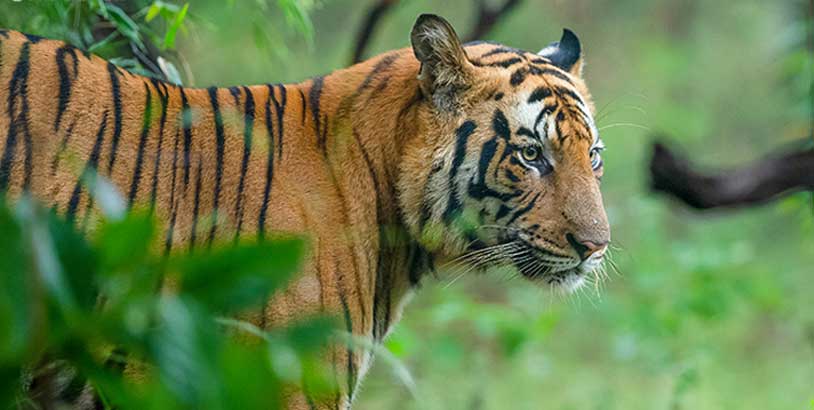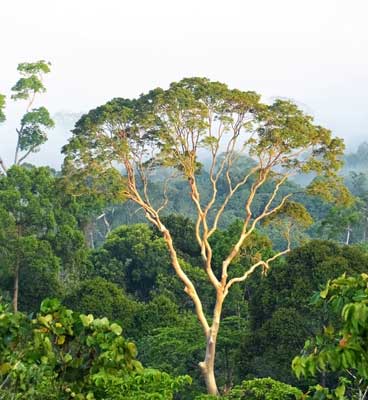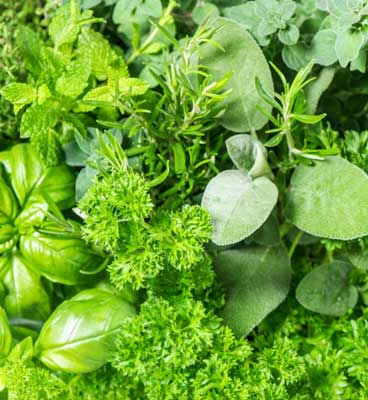Flora in Bandhavgarh
The forests of Bandhavgarh National Park are mostly tropical and moist deciduous forests. Since the region is blessed with a moderate climate, the entire forest looks mesmerizing. After a healthy monsoon, the forest displays myriad shades of lush greens which make for a splendid sight. The vegetation of the forest comprises mainly of Sal trees in the valley, while bamboo trees line the lower slopes. These two trees comprise the major flora of the Bandhavgarh National Park and cover the entire plain region of the forest. The upper areas of the slopes have a mixed forest due to differences in soil characteristics.
The jungle has large expanses of woodlands with sparse dry undergrowth. The variation in landforms and soil results in different types of vegetation. The forest of the region can be classified into the moist peninsular low-level Sal forests, the West Gangetic moist-mixed deciduous forests, Southern tropical moist deciduous and dry deciduous forests. The exquisite flora of the park is dominated by Sal and bamboo, though several other varieties of trees are also found in the region. There are 50 aquatic plant species, 600 flowering plant species and 18 plant species apart from several trees, shrubs and herbs in the core and buffer zone area that offer nutrition to birds and other herbivores. These herbivores serve as food for carnivores like tigers that dominate the forests of Bandhavgarh.

Trees in Bandhavgarh National Park
Sal trees form one of the dominant flora of the Bandhavgarh forests. The trees are known for termite-resistant wood which comes in handy for making furniture. They also find usage for the construction of railway sleepers. The gum released from its stem also finds application in marine yards and for making show polish. Apart from Sal (Shorearobusta) the other common plant found in the region is bamboo (Dendrocalamusstrictus).There are several other trees that are found in the region. These include Dhauda (Anogeissus latifolia), Arjun (Terminalia arjuna), Bhirra (Chloroxylon sweitenia), Khamer, Salai (Boswellia serrata), Gamar (Gmelina arborea), Dhaman (Grewia tilifolia), Khair (Acacia katechu), Kusum (Scleicheratrijuga), Haldu (Adina cardifolia), Kalasiris (Albizzia lebbek), Frankincense tree etc. The Saja (Terminalia tomentosa) tree and related shrubs of the genus are a rich source of drugs, gums and oil. The Semar (Bombax ceiba) tree is well known for the production of surgical dressings. The floss of the plant is also used to prepare stuffing for pillows. The leaves of the Tendu (Diospyros melanoxylon) plant are in demand for rolling ‘beedis’ while its flowers and bark are supposed to have properties to cure nervous disorders. The fertile lands of the region are replete with high grasslands. Amla (Emblica officinalis), Banyan (Ficusbengalensis),Pipal (Ficus religiosa), Mango (Mangifera indica), Jamun (Syzigiumcuminii), Stone apple or Bel (Aegle marmelos), Ber (Ziziphus mauritiana) etc. are some of the fruit trees that are found in the forests of Bandhavgarh National Park. The flowering trees that impart the forest its myriad hues during the spring season include Palasor Flame of the Forest (Butea monosperma),Amaltas (Cassia fistula), Kapok (Bombay ceiba), and the climber (Butea superba). The Mahua (Madhuca indica) plant is also one of the popular ones in the region. Its flowers are used to make powerful homebrew that is consumed by the local villagers. Apart from this, the oil obtained from its seeds is used in the soap industry and as edible oil too.


Herbs in Bandhavgarh National Park
Rare species of insectivorous plants like Drocerapeltata are found in the region. Apart from them, medicinal plants are also present in the area. In some isolated patches of the Tala range of Bandhavgarh reserve, Acorus calamus (Buch), a medicinal plant can be found easily.

